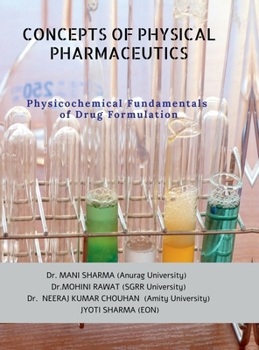Concepts of Physical Pharmaceutics: Physicochemical Fundamentals of Drug Formulation
Select Format
Select Condition 
Book Overview
"Concepts of Physical Pharmaceutics" offers a thorough exploration of the core and advanced principles governing drug behavior and formulation in pharmaceutical sciences. The book covers key topics such as solubility and dissolution, states and transitions of matter, surface and interfacial phenomena, protein binding, buffer and isotonic solutions, colloidal systems, rheology, reaction kinetics, micromeritics, and dispersion technologies. Each chapter highlights essential concepts: solubility and dissolution (bioavailability, pH, partition coefficient), matter dynamics (phase transitions, solid/liquid/gas properties), surface phenomena (adsorption, surfactants, colloids), protein-drug binding (complexes, bioavailability), buffer/isotonic principles (pH, physiological compatibility), colloidal dispersion (classification, pharmaceutical uses), rheology (viscosity, elasticity), reaction kinetics (stability, degradation, modeling), micromeritics (particle size, flow, compaction) and coarse dispersion/emulsion technology (formulation, stability). Integrating physical chemistry, biophysics, and pharmaceutical technology, the text provides learners with both conceptual clarity and practical tools to address challenges in formulation, stability, and drug delivery.With an emphasis on quantitative models, experimental methods, and real-world relevance, this book is a vital resource for students mastering the science of physical pharmaceutics and innovative pharmaceutical development.





